Katie Marie's Blog, page 5
July 16, 2025
Obscure Horror: Exploring Folklore in “Noroi: The Curse
In the shadowy realm of Japanese horror cinema, “Noroi: The Curse” stands as a masterclass in weaving folklore into a spine-chilling narrative that grips audiences from start to finish. Directed by the visionary Kōji Shiraishi, this 2005 supernatural horror film utilizes the found footage format to unravel a mysterious ancient curse linked to a malevolent spirit.
As viewers are drawn into this eerie investigation, they are met with an intricate tapestry of documentary-style storytelling and atmospheric tension that keeps them on the edge of their seats. By delving into the profound impact of folklore in horror, “Noroi: The Curse” not only captivates but also invites us to question the boundaries between myth and reality.
Join meas we explore the film’s haunting themes and the genius behind its chilling narrative.
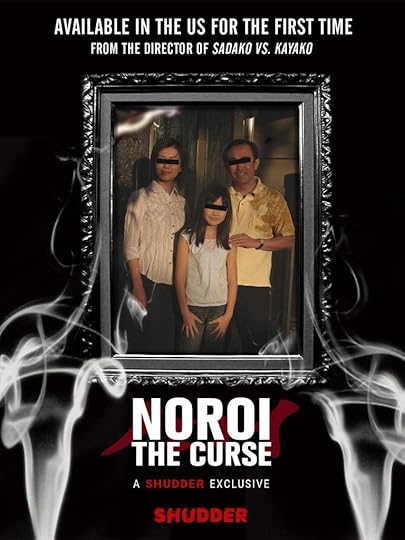 Documentary Style Meets Supernatural Horror
Documentary Style Meets Supernatural HorrorThe film’s documentary style lends an air of authenticity to the supernatural events it depicts. By presenting itself as a collection of real footage, “Noroi: The Curse” blurs the line between reality and fiction. This approach heightens the viewers’ sense of dread, as they feel they are witnessing actual events unfold.
This blending of styles is achieved through the use of hand-held cameras and interviews, which mimic genuine investigative reporting. The narrative unfolds as a series of seemingly disconnected stories that slowly intertwine, drawing the audience deeper into the mystery.
The documentary style provides a foundation for the supernatural elements. The viewer is lulled into a sense of comfort by the familiar format, only to be jolted by the unexpected horrors that emerge. This juxtaposition is crucial in maintaining suspense and tension throughout the film.
For further insight into the film’s unique style, this review provides a comprehensive analysis of its impact on horror cinema.
The Power of Found Footage StorytellingFound footage storytelling is at the heart of “Noroi: The Curse.” This technique involves assembling a narrative from supposedly lost or discovered video recordings. The film expertly uses this method to unravel its chilling tale, creating an immersive experience for viewers.
The authenticity of found footage lies in its raw and unpolished nature. In “Noroi,” this technique enhances the realism of the horror, making the supernatural elements appear more believable. The shaky camera work and seemingly unplanned shots mimic amateur recordings, adding to the film’s credibility.
The narrative unfolds through a series of clips, gradually revealing the chilling truth behind the ancient curse. This piecemeal storytelling method allows for greater suspense as the audience pieces together the mystery along with the protagonists.
For a deeper dive into the effectiveness of found footage in horror, consider exploring analysis from fans on Reddit, where viewers discuss the film’s impact and techniques.
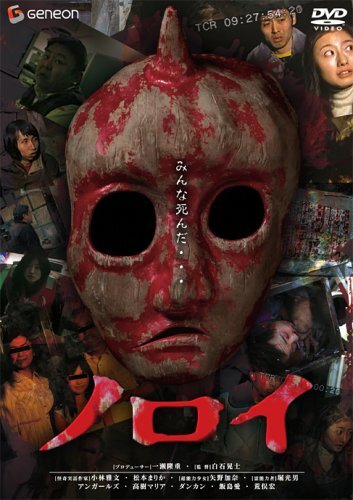 Building Atmospheric Tension
Building Atmospheric TensionAtmospheric tension is a key element in the film’s horror arsenal. Through a combination of visual cues, sound design, and pacing, “Noroi” generates a pervasive sense of unease that lingers throughout the film.
Visual cues such as dim lighting, shadowy figures, and unsettling scenes contribute to the oppressive atmosphere. These elements make viewers feel as though they are constantly on the brink of discovering something terrifying.
The sound design plays a crucial role, using ambient noises and unsettling music to heighten the sense of dread. Silence is often used strategically, allowing tension to build before a sudden, jarring sound breaks the calm.
Pacing is carefully controlled, with slow, deliberate scenes building anticipation before a sudden twist or reveal. This pattern keeps audiences engaged and heightens the impact of each scare.
For more on how tension is built in horror films, see this analysis.
Character-Driven Plot and Audience EngagementThe plot of “Noroi: The Curse” is driven by its well-developed characters, whose personal journeys engage the audience on a deeper level. This character-driven approach enhances the film’s emotional impact and keeps viewers invested in the story.
The protagonist, a determined paranormal investigator, serves as the audience’s guide through the film’s eerie landscape. His quest to uncover the truth behind the curse creates a compelling narrative arc that propels the story forward.
Supporting characters, each with their own mysteries and motives, add layers to the plot. Their interactions with the protagonist reveal new facets of the curse and deepen the intrigue surrounding it.
This focus on character development ensures that the audience remains emotionally connected to the story. As viewers follow the characters’ journeys, they become more invested in their fates, heightening the tension and suspense.
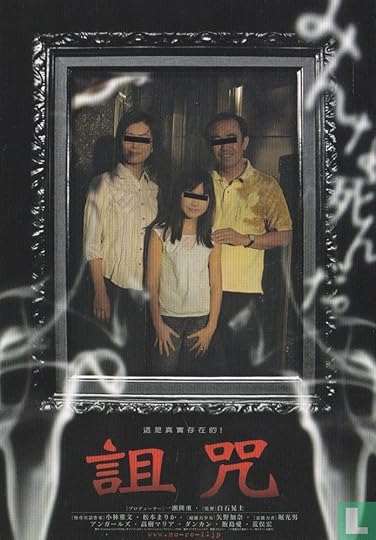 Influence of Folklore in Horror
Influence of Folklore in HorrorFolklore serves as a rich wellspring of inspiration for horror, providing timeless stories that resonate with audiences. In “Noroi,” these ancient tales are woven into the narrative, lending authenticity and depth to the film’s supernatural elements.
The use of folklore allows the film to explore universal themes such as fear of the unknown and the consequences of disturbing the supernatural. These stories, passed down through generations, tap into primal fears that remain relevant today.
Incorporating folklore into horror also enhances the narrative’s cultural significance. By grounding the story in traditional myths, “Noroi” connects with audiences on a cultural level, adding layers of meaning to the film’s chilling events.
For a more detailed exploration of folklore’s role in horror, consider reading this discussion.
Malevolent Spirits and Their ImpactAt the heart of “Noroi: The Curse” is the presence of malevolent spirits, whose influence drives the film’s terrifying events. These spirits embody the darkest aspects of folklore, serving as both antagonists and symbols of the ancient curse.
Malevolent spirits in horror often represent unresolved grievances or unfinished business from the past. In “Noroi,” these entities are tied to the curse, manifesting their wrath upon those who disturb them.
Their impact is felt throughout the film, as they manipulate events and characters to fulfill their vengeful desires. The presence of these spirits creates a constant sense of danger, as the protagonists struggle to break free from their influence.
The portrayal of malevolent spirits in “Noroi” is a chilling reminder of the power and persistence of ancient curses. Their presence serves as a cautionary tale about the consequences of tampering with forces beyond our understanding.
July 14, 2025
Historical Horrors Reimagined: Alma Katsu’s Unique Take on the Supernatural and Its Roots in Reality
In the realm of supernatural fiction, Alma Katsu stands out as a master of melding historical horror with the eerie whispers of the unknown. Her novels, such as “The Hunger” and “The Deep,” transport readers to eerie past events, reimagined with supernatural twists that illuminate the darkest aspects of human nature.
Katsu’s storytelling is a tantalizing blend of reality and imagination, drawing from real historical figures and events to create chilling narratives that linger long after the final page is turned. What compels her readers is not just the thrill of the supernatural, but the haunting exploration of themes of survival and the unsettling truths of human obsession.
Join me as we delve into Alma Katsu’s unique approach to horror, where each tale invites a deeper reflection on the shadows of history.
 Real Events Inspire Supernatural Tales
Real Events Inspire Supernatural TalesAlma Katsu’s novels often draw from real historical events, reimagining them with a supernatural flair. For instance, her book “The Hunger” revisits the harrowing journey of the Donner Party, adding a chilling twist. By integrating the supernatural, Katsu brings these historical moments to life in unexpected ways.
In “The Deep,” Katsu tackles the infamous sinking of the Titanic, offering an eerie reimagining of events. Her use of historical settings not only grounds the story but also deepens the intrigue. This approach allows her to explore themes like survival and human nature in a new light.
Katsu’s ability to fuse real events with supernatural elements creates a narrative that is both engaging and thought-provoking. It invites readers to reflect on history in a way that is both entertaining and educational, blurring the lines between fact and fiction.
Authenticity in Supernatural FictionAuthenticity in supernatural fiction is key to creating a believable narrative. Alma Katsu achieves this by thoroughly researching historical events and figures, ensuring her stories have a basis in reality.
Katsu’s commitment to authenticity is evident in her attention to detail. She meticulously crafts her characters and settings, making sure they are true to the time period she depicts. This dedication to accuracy enriches the story, providing a solid foundation for the supernatural elements to thrive.
By grounding her fiction in real-world context, Katsu allows readers to suspend disbelief more easily. This blend of authenticity and imagination makes her novels not only compelling but also immersive, drawing readers into a world where the past and the supernatural intersect seamlessly.
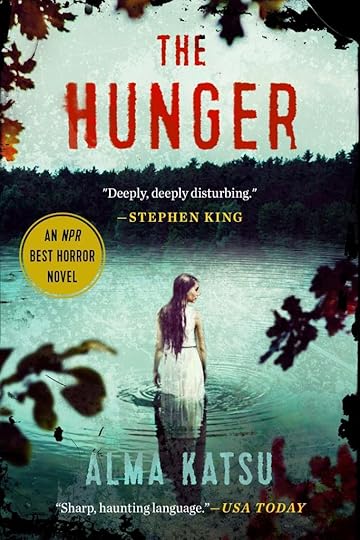 The Hunger: Survival and Obsession
The Hunger: Survival and Obsession“The Hunger” is a gripping exploration of survival and obsession set during the ill-fated Donner Party expedition. Alma Katsu uses this backdrop to delve into the human psyche, examining the lengths to which people will go to survive.
The novel portrays the desperation felt by the travelers, highlighting how survival instincts can lead to dark and obsessive behaviors. Through her characters, Katsu explores themes of trust, betrayal, and the thin line between humanity and monstrosity.
By infusing the story with supernatural elements, Katsu adds a layer of tension and mystery that keeps readers on edge. This fusion of reality and the supernatural prompts readers to consider the nature of obsession and its impact on human behavior during times of crisis.
The Deep: Echoes of History“The Deep” revisits the Titanic disaster, blending historical fact with ghostly elements to create a haunting narrative. Alma Katsu’s portrayal of the ship’s ill-fated voyage is rich with atmospheric tension, capturing the eerie isolation of the open sea.
Katsu’s choice to incorporate supernatural elements into this historical event adds depth to the story. It allows her to explore how the past continues to resonate, echoing through the lives of her characters long after the disaster.
The novel examines themes such as guilt, redemption, and the haunting nature of unresolved pasts. By setting her story against a well-known historical backdrop, Katsu invites readers to re-examine the Titanic tragedy through a supernatural lens, revealing hidden layers of meaning.
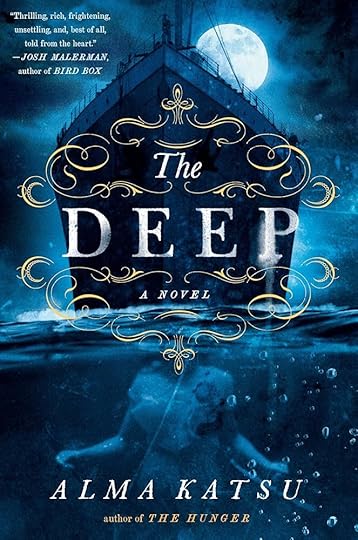 Dark Aspects of Human Nature
Dark Aspects of Human NatureAlma Katsu’s novels often explore the dark aspects of human nature, using supernatural elements to heighten the horror. Her characters face internal and external conflicts that reveal their deepest fears and desires.
Katsu’s portrayal of human nature is nuanced, showing how individuals grapple with moral dilemmas and the consequences of their actions. Through her stories, she examines how fear and desperation can drive people to commit unspeakable acts.
By grounding her supernatural tales in the complexities of human behavior, Katsu provides a mirror to society, reflecting the potential for darkness that exists within us all. This exploration adds depth to her narratives, making them thought-provoking and unsettling.
Creating Profound DreadCreating a sense of profound dread is an art that Alma Katsu has mastered. Her ability to intertwine reality with the supernatural generates a pervasive sense of unease that lingers with readers.
Build a realistic foundation: Katsu ensures her supernatural elements are believable by anchoring them in real-world settings and events.Develop complex characters: Her characters are multi-dimensional, with motivations that are relatable and compelling.Introduce suspense gradually: By slowly unveiling the supernatural, Katsu keeps readers on edge, uncertain of what lurks ahead.Highlight psychological tension: The internal struggles of her characters add an additional layer of horror, intensifying the overall atmosphere.By using these techniques, Katsu creates narratives that are not only suspenseful but also deeply unsettling, leaving a lasting impression on her audience.
July 11, 2025
Horror Movie Releases You Can’t Miss: Expert Reviews and Insights from The HORRORific Podcast
The HORRORific Podcast is your ultimate guide to this spine-chilling genre, offering expert reviews and insights into the latest horror movie releases that are sure to haunt your dreams. Whether you’re a fan of bone-chilling remakes or a connoisseur of classic cinema, this podcast brings you the best of both worlds, along with an exclusive spotlight on independent authors crafting their own terrifying tales. Each week, they invite you to experience the macabre through thier captivating short story performances, where eerie narratives come to life with every whispered word.
Join me as we unravel the mysteries lurking in the shadows and discover which books, films and games will leave you sleeping with the lights on.
Follow The Horrorific Podcast on Spotify.
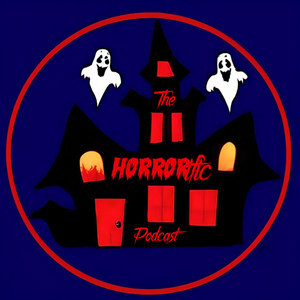 Latest Horror Podcast Highlights
Latest Horror Podcast HighlightsIn the latest episodes of The HORRORific Podcast, listeners are treated to a deep dive into horror releases, be they games, books or movies. Each episode offers a unique blend of expert commentary and fan reactions.
The podcast features interviews with horror creators, providing behind-the-scenes insights into the creative processes. Listeners can expect to hear about the challenges and triumphs in bringing these horror stories to life, enhancing their appreciation for the genre.
Moreover, the podcast spans the wide range of mainstream and indie, highlighting the groundbreaking work of mainstream and independent creators. This is particularly appealing to audiences who crave fresh, innovative content.
For those seeking interactive experiences, the podcast’s YouTube channel offers visual supplements to the audio content, enriching the overall experience.
Expert Reviews That IntrigueThe HORRORific Podcast prides itself on delivering expert reviews that intrigue and engage. Each review is crafted to provide a detailed analysis of key elements like plot, character development, and cinematography.
Listeners will find that the reviews often pose questions that invite reflection: What makes this stand out? Why do certain scenes leave a lasting impact on viewers/readers? These questions spark curiosity, encouraging fans to delve deeper into their understanding of horror cinema.
For those eager for more, the podcast’s reviews often direct listeners to their Facebook page for extended discussions and fan interactions.
Engaging Insights for EnthusiastsFor horror enthusiasts, The HORRORific Podcast provides engaging insights that deepen the understanding of the genre. Each episode is packed with thematic explorations and genre-specific analyses.
The podcast is adept at connecting horror tropes to broader societal themes, offering listeners a richer context for the genre they love. For example, recent discussions have explored how modern horror reflects current anxieties and societal fears.
July 9, 2025
Book vs. Film: The Silence
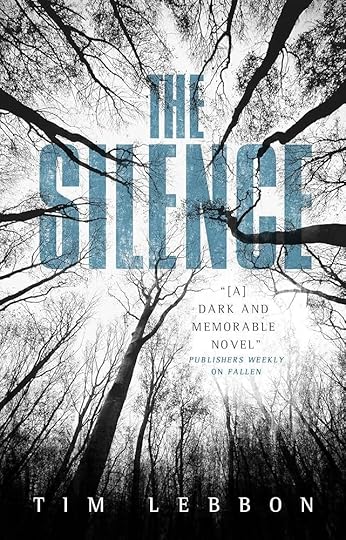
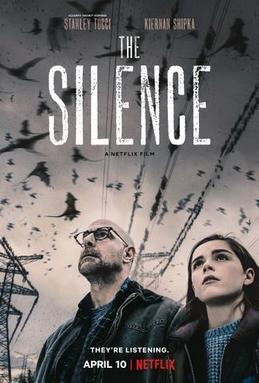
In the eerie silence where monstrous creatures lurk, the medium through which a story is told can drastically alter its impact on the audience. Tim Lebbon’s novel, “The Silence,” and its 2019 film adaptation directed by John R. Leonetti, offer a fascinating case study in how narrative elements transform across mediums.
As we delve into this post-apocalyptic horror tale, we will uncover the nuanced differences in character development and plot between the book and the film, examining how these changes affect the tension and fear. How does the intimate immersion of reading compare to the visual storytelling techniques of cinema, and what does this mean for our connection to the characters’ struggles for survival?
Join me as we explore the chilling depths of sound-based horror and the art of adaptation, unraveling the mysteries that lie within “The Silence” experience.
Character Development in AdaptationsCharacter development in adaptations can significantly influence the narrative’s emotional depth. In Tim Lebbon’s “The Silence,” the novel provides a rich tapestry of character inner thoughts and motivations, immersing the reader in the protagonists’ struggles.
In contrast, the film adaptation, directed by John R. Leonetti, must convey these internal experiences through visual cues and dialogue, often leading to a more streamlined portrayal. This can sometimes result in a loss of nuanced character arcs that are deeply explored in the book.
For example, the character of Ally, who is central to both the novel and the film, undergoes a profound transformation. In the novel, her journey is detailed with introspective passages that reveal her fears and resilience. The film, however, focuses on external expressions of her bravery, altering the audience’s perception.
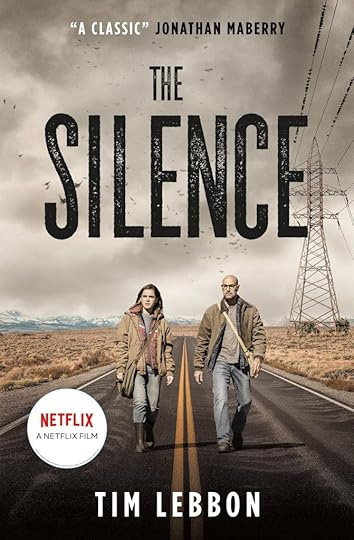 Version 1.0.0Plot Points: Book vs. Film
Version 1.0.0Plot Points: Book vs. FilmWhen examining the plot points of “The Silence” across its mediums, notable differences emerge. While the core narrative remains a survival story in a world plagued by sound-hunting creatures, the execution diverges.
In the novel, Tim Lebbon meticulously builds tension through descriptive prose, allowing readers to experience the characters’ plight intimately. Scenes are vividly depicted, with detailed settings that evoke a sense of dread and anticipation.
Conversely, the film opts for a more fast-paced approach, emphasizing action and visual spectacle. This shift can lead to the omission of certain plot elements that contribute to the book’s depth and suspense.
AspectNovelFilmPacingSlow and detailedFast and action-orientedPlot ElementsIn-depth exploration of subplotsStreamlined for visual impactAtmosphereBuilds through proseRelies on cinematography and effectsUltimately, these adaptations showcase the trade-offs between immersive detail and cinematic dynamism, impacting how the story unfolds and is perceived by audiences.
Tone and Themes: Fear and SurvivalThe tone and themes of fear and survival are central to both the novel and the film adaptation of “The Silence.” However, the way these elements are conveyed can differ significantly between the two formats.
In the novel, Lebbon crafts a dark and foreboding atmosphere, using descriptive language to evoke a sense of isolation and vulnerability. The themes of survival are intricately woven into the characters’ internal and external struggles.
The film, on the other hand, utilizes visual and auditory cues to create tension and convey the theme of survival. Dramatic camera angles, lighting, and sound effects play a pivotal role in immersing the audience in the story’s perilous world.
Despite these differences, both mediums succeed in exploring the inevitable human struggle for survival in the face of fear. They highlight the resilience of the human spirit, albeit through distinct narrative techniques.
 Impact on Audience Connection
Impact on Audience ConnectionThe film’s visual storytelling techniques are designed to forge a deeper connection with the audience. By utilizing cinematic elements, such as lighting, camera angles, and sound, the film creates a visceral experience. For instance, the use of close-up shots captures the characters’ emotions, drawing viewers into their world. This visual intimacy can mirror the emotional depth found in the novel, albeit through a different lens.
Additionally, the sound design plays a crucial role in heightening tension. Silence and sudden noises are strategically used to evoke fear, mirroring the novel’s emphasis on sound-based horror. Ultimately, these techniques allow the film to convey emotional resonance and suspense, creating a unique connection between the audience and the characters’ struggles. The film’s ability to evoke visceral reactions complements the novel’s immersive reading experience, offering a distinct yet compelling adaptation.
Intimacy and Imagination in NovelsNovels offer a level of intimacy that is often unparalleled. Through written words, readers are invited into the characters’ minds, exploring their thoughts, fears, and motivations. This imaginative engagement allows readers to create a personalized version of the story, shaping the narrative in ways that resonate with their perceptions. The intimacy of reading fosters a deep connection to the characters’ struggles and triumphs.
Additionally, the novel’s descriptive prose allows readers to visualize the setting and atmosphere, enhancing the sense of immersion. The power of imagination transforms the reading experience into a collaborative journey between the author and the reader. Ultimately, the intimacy of novels creates an experience that is deeply personal and engaging, allowing readers to explore the depths of sound-based horror at their own pace and in their own mind.
 Emotional Depth and Character Connection
Emotional Depth and Character ConnectionThe emotional depth and character connection offered by novels like “The Silence” are profound. Through detailed character development and introspective passages, readers are drawn into the emotional landscapes of the protagonists. Lebbon’s prose delves into the characters’ internal conflicts, revealing their vulnerabilities and strengths. This exploration allows readers to empathize with the characters, fostering a sense of connection that can be more challenging to achieve in visual media.
The novel’s ability to convey emotional nuance through language enables readers to experience the characters’ journey on a deeply personal level. The connection is further enhanced by the reader’s active engagement in the narrative, as they imagine the scenes and emotions described. In contrast to the film’s visual storytelling, the novel offers a more introspective experience, allowing readers to explore the complexities of fear, survival, and resilience through the lens of their imagination.
July 7, 2025
Unraveling the Secrets: Why ‘Betrayal at House on the Hill’ is a Must-Play for Horror Board Game Enthusiasts
Step into the shadowy corridors of a haunted mansion, where every creak and whisper holds the promise of spine-chilling revelations—welcome to the world of “Betrayal at House on the Hill.”
This horror board game beckons thrill-seekers with its unique blend of cooperative gameplay and unpredictable betrayal mechanics, creating an experience that is both captivating and terrifying. As players navigate through the ominous chambers, they encounter scenarios that transform allies into adversaries, ensuring that no two games unfold the same way.
With strategies as varied as the mansion’s dark secrets, “Betrayal at House on the Hill” offers a treasure trove of horror-themed excitement that promises to keep even the most seasoned gamers on the edge of their seats.
Join me as we unravel the secrets behind this essential addition to any horror enthusiast’s collection, and discover the chilling allure that makes it a must-play adventure.
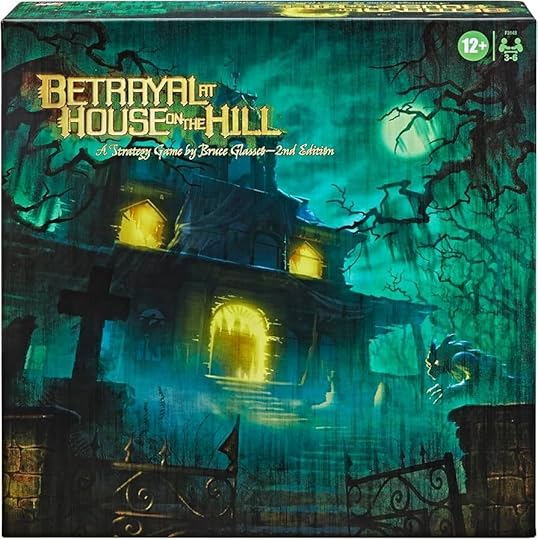 Immersive Gameplay Experience
Immersive Gameplay ExperienceImmersion in horror board games involves more than just playing. It’s about entering a world filled with fear, suspense, and strategic challenges. These games often use intricate storylines and vivid thematic elements to pull players into their depths.
In “Betrayal at House on the Hill,” the immersive experience is heightened by the unpredictability of each session. The game’s modular board ensures that no two games are the same, keeping the excitement fresh and engaging. Players explore the mansion room by room, revealing new challenges and secrets.
The richly detailed components and story-driven scenarios enhance the sense of immersion, making each player feel like a protagonist in a horror film. The depth of gameplay extends beyond typical board game strategies, requiring players to adapt and survive in a dynamic environment.
Haunting Atmosphere and ThemesHorror board games thrive on creating an atmosphere of tension and suspense. The themes often revolve around haunted locations, supernatural beings, and the unknown. These elements work together to create a gripping narrative that keeps players on edge.
In “Betrayal at House on the Hill,” the haunted mansion setting is a perfect backdrop for the eerie tales that unfold. Each room holds mysteries waiting to be discovered, contributing to the overall atmosphere. As noted by fans, the thematic elements are seamlessly integrated into the gameplay, enhancing the chilling experience.
The artwork and design further reinforce the haunting ambiance, allowing players to feel the weight of every decision. The combination of these elements ensures the game remains a staple for fans of horror board games, consistently delivering an intense and memorable experience.
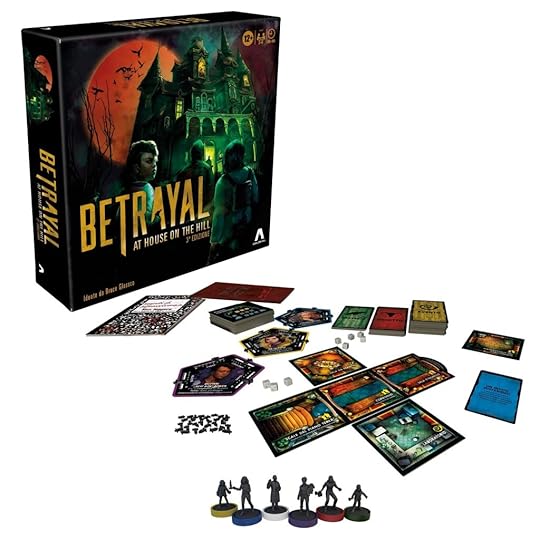 Version 1.0.0Unique Game Mechanics
Version 1.0.0Unique Game MechanicsThe game mechanics in “Betrayal at House on the Hill” are what truly set it apart. The game employs a blend of cooperative and competitive elements, resulting in a dynamic and unpredictable experience. Players work together initially, exploring the haunted mansion.
The mansion’s layout is created using modular tiles, ensuring a unique setup each time.As players discover new rooms, they encounter events, items, and ominous omens that add layers of complexity to the game.At a pivotal point, the “Haunt” phase begins, revealing a traitor among the players.This shift from cooperation to betrayal is a hallmark of the game, as discussed in this guide. The mechanics require players to adapt quickly, strategizing on the fly to either survive or sabotage their opponents.
Thrilling Betrayal MomentsThe thrill of betrayal is a key component of “Betrayal at House on the Hill.” As the game progresses, alliances are tested, and players must navigate the shifting dynamics of trust and deception. This creates an atmosphere of tension and excitement.
During the Haunt phase, one player becomes the traitor, with their own objectives to complete.The remaining players must work together to thwart the traitor’s plans, fostering a sense of urgency and teamwork.Each scenario offers different challenges, ensuring that betrayal moments are always fresh and exhilarating.According to expert reviews, these betrayal moments are what make the game so engaging. Players must constantly reassess their strategies, adding layers of depth to the gameplay.
July 4, 2025
A Modern Twist on Terror: Arkasha Stevenson’s Vision for ‘The First Omen’
The chilling allure of supernatural horror finds a new pulse with Arkasha Stevenson’s visionary reimagining of ‘The First Omen.’ As a masterful blend of psychological thriller and modern horror, this film invites audiences to grapple with themes of evil and parental fears, cleverly wrapped in a narrative that reinvigorates the iconic Omen franchise.
Stevenson’s unique approach to character development serves as a compelling vehicle for viewers to explore the haunting depths of human psyche and the supernatural. As both a tribute to the original and a fresh chapter in its legacy, ‘The First Omen’ promises to captivate horror enthusiasts and thrill newcomers alike. Join me as we delve into the shadowy corridors of this modern terror, where every twist leaves you questioning the nature of evil itself.
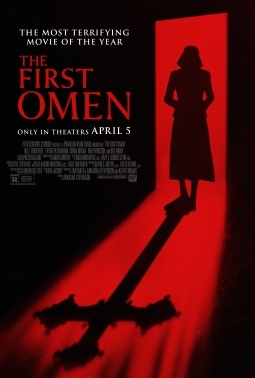 Reimagining the Omen Franchise
Reimagining the Omen FranchiseStevenson’s reimagining of the Omen franchise is a daring endeavor that seeks to respect the original while introducing innovative elements. Her vision is rooted in a deep understanding of both the psychological and supernatural underpinnings of the classic horror tale.
By incorporating contemporary themes and concerns, such as technological anxieties and societal changes, Stevenson bridges the generational gap between the original and new audiences. This approach not only refreshes the narrative but also makes it relevant to today’s viewers.
Moreover, Stevenson’s work emphasizes a subtle yet profound transformation of the franchise, which she achieves through a combination of visual storytelling and complex character arcs. Her direction promises a film experience that is as intellectually stimulating as it is terrifying.
Psychological and Supernatural ElementsCentral to Stevenson’s vision is a thoughtful blend of psychological and supernatural elements. This combination enhances the suspense and intrigue, keeping audiences on the edge of their seats.
Psychological depth: Characters are crafted with intricate personal and emotional layers, providing insight into their fears and motivations.Supernatural intrigue: The film seamlessly integrates eerie supernatural occurrences that challenge the characters’ perception of reality.Narrative tension: The interplay between psychological and supernatural threats creates a continuous tension that drives the plot forward.These elements together form a tapestry that is both chilling and thought-provoking, ensuring that ‘The First Omen’ stands out in the crowded horror landscape.
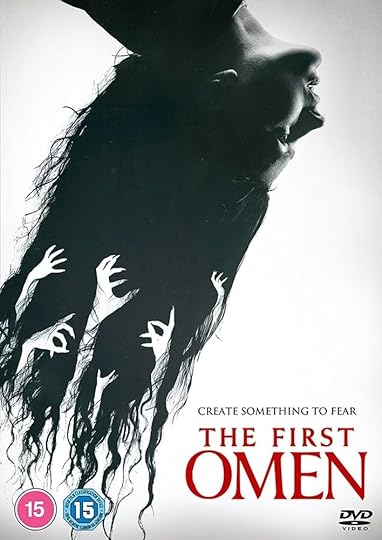 Breathing New Life into Horror
Breathing New Life into HorrorWith ‘The First Omen,’ Stevenson aims to breathe new life into the horror genre. Her approach involves a meticulous balance of innovation and homage to the original series.
Visual innovation: The film employs modern cinematographic techniques to enhance the horror atmosphere, such as dynamic lighting and unique camera angles.Narrative complexity: The storyline is layered with subplots that explore themes of morality, fear, and identity.Cultural relevance: By addressing contemporary societal issues, the film resonates with a modern audience on a personal level.This fresh take not only revitalizes the franchise but also sets a new standard for future horror films.
Modern Horror Through Parental FearsA significant theme in Stevenson’s ‘The First Omen’ is the exploration of parental fears within the realm of modern horror. This fear transcends generations and taps into a universal human experience.
By weaving these elements into the storyline, Stevenson adds depth and relatability to the horror experience.
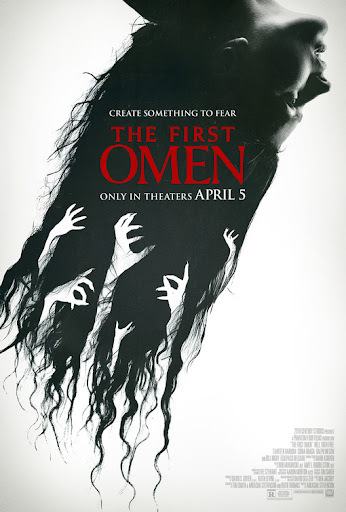 Complex Characters and Deep Narratives
Complex Characters and Deep NarrativesStevenson’s focus on character complexity leads to deep, engaging narratives. Characters are not merely vessels for horror but are integral to the storytelling process.
Each character in ‘The First Omen’ is crafted with a blend of strength and vulnerability, making them relatable and three-dimensional. Through their struggles and triumphs, the audience gains insight into their inner worlds, deepening the emotional impact of the film.
Personal growth: Characters evolve as they face their fears and the supernatural.Moral dilemmas: They are presented with challenging choices that test their beliefs and values.Emotional resonance: These elements create a narrative that resonates long after the credits roll.Balancing Tradition and InnovationStevenson’s work is a masterclass in balancing tradition and innovation. Her direction pays homage to the original series while introducing modern storytelling elements that refresh the narrative.
AspectTraditional ApproachStevenson’s InnovationVisual StyleClassic Gothic AestheticsModern Cinematography TechniquesThemesGood vs. EvilMoral Ambiguity and ComplexityCharacter ArcsSimple ArchetypesMulti-layered, Dynamic CharactersThis balance ensures that ‘The First Omen’ appeals to both long-time fans and new audiences, offering something fresh yet familiar.
Enticing Newcomers and Longtime Fans‘The First Omen’ captivates both newcomers and longtime fans of the Omen franchise. Stevenson’s ability to blend old and new elements is key to this broad appeal.
For newcomers: The film serves as an accessible entry point into the horror genre with its modern themes and relatable characters.For longtime fans: The narrative respects the rich history of the franchise while offering fresh twists that keep viewers engaged.Universal themes: The exploration of fear, identity, and morality resonates with a wide audience, transcending typical horror tropes.By appealing to such a diverse audience base, ‘The First Omen’ sets a precedent for future horror films.
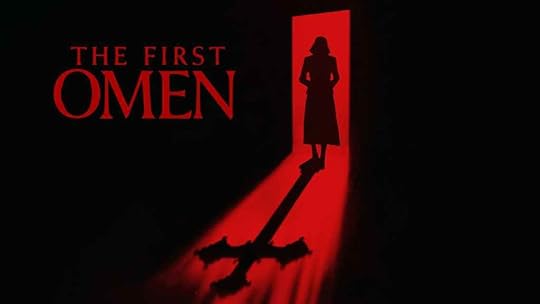 Exploring Modern Supernatural Horror
Exploring Modern Supernatural HorrorStevenson’s film delves into the depths of modern supernatural horror. By tackling contemporary fears and anxieties, the movie offers a fresh perspective on classic horror themes.
Technology and isolation: These modern fears are woven into the narrative, reflecting societal changes.Supernatural elements: The film uses these elements as metaphors for internal struggles, enhancing the psychological tension.Cultural significance: By addressing issues relevant to today’s world, the film remains culturally significant and relatable.This exploration of modern supernatural horror cements Stevenson’s place as a visionary director within the genre.
The Future of Psychological ThrillersWith ‘The First Omen,’ Stevenson sets a new standard for psychological thrillers. Her innovative approach challenges conventional storytelling and paves the way for future films in the genre.
Complex narratives: The film’s intricate plotlines and character development set a benchmark for depth in storytelling.Innovative techniques: Stevenson’s use of modern filmmaking techniques enhances the suspense and engagement.Genre evolution: Her work demonstrates how horror and psychological thrillers can evolve to reflect contemporary issues.Stevenson’s vision not only reinvigorates the Omen franchise but also influences the direction of psychological thrillers moving forward.
For more information about the film, you can visit IMDb.
July 2, 2025
Discovering the Horror Within: How “Sacrificial Animals” Explores the Collapse of a Family
In the chilling landscape of supernatural horror, “Sacrificial Animals” by Kailee Pedersen stands out as a haunting exploration of ancient Chinese mythology intertwined with the eerie collapse of a family.
Inspired by Pedersen’s personal journey from Nanning, China to a farm in Nebraska, this atmospheric debut delves into the legacy of inherited trauma that shadows the Morrow family. As protagonist Nick Morrow returns to his childhood home, summoned by his estranged father’s mysterious deathbed request, he is thrust back into a world of old wounds and new threats.
With the spectral past creeping into the present, Nick must navigate unsettling family dynamics and a burgeoning romance with his brother’s wife, Emilia, whose enigmatic allure hints at sinister, possibly mythological depths. Dive into this gripping tale where every page teeters on the edge of suspense and curiosity, promising a narrative rich with queer awakening and the spectral echoes of a family’s darkest secrets. Find the book on Amazon.
 A Journey from Nanning to Nebraska
A Journey from Nanning to NebraskaThe novel’s setting transitions from the bustling city of Nanning, China, to the vast, open landscapes of Nebraska. This shift reflects a journey not just of physical distance but of cultural and personal transformation. Nick Morrow, adopted from China, navigates these disparate worlds while uncovering layers of his identity.
The rural Nebraska farm, steeped in memories and mystery, contrasts sharply with Nick’s beginnings in Nanning. This setting amplifies the novel’s tension, serving as a witness to the Morrow family’s unraveling. As Nick returns, the farm becomes a stage where past grievances resurface.
Through Nick’s journey, the narrative explores the intersection of personal history and environment. This exploration invites readers to consider how geographic and cultural shifts influence identity and family relationships.
The Shadow of Inherited TraumaInherited trauma forms a chilling core in “Sacrificial Animals,” influencing characters across generations. Trauma, passed down like a family heirloom, manifests in both overt and subtle ways, shaping the Morrow family’s interactions and individual psyches.
In literature, inherited trauma often disrupts the present, as seen with Nick’s return to his childhood home. Old wounds and grievances resurface, illustrating how unresolved pasts can haunt present relationships. This narrative thread draws readers into a cycle where the past is never truly past.
The novel’s portrayal of trauma is nuanced, encouraging empathy and understanding of its lingering effects. The Morrow family becomes a case study, exemplifying how familial trauma can weave itself into the fabric of daily life, affecting decisions and relationships.
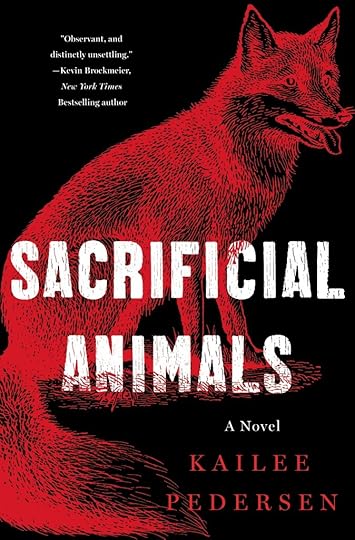 The Supernatural Horror Elements
The Supernatural Horror ElementsSupernatural horror is skillfully woven into the novel through mythological references and eerie events. These elements elevate the tension, creating a haunting atmosphere that lingers throughout the story. The supernatural acts as both a literal and figurative specter within the Morrow family’s life.
Mythological creatures and ancient legends permeate the narrative, adding a layer of mystery and suspense.Unexplained events on the farm challenge the characters’ understanding of reality, blurring the lines between myth and truth.Symbolic representations of these myths suggest deeper meanings tied to the family’s struggles and secrets.These elements invite readers to question the nature of reality and the power of ancient traditions in shaping modern lives. By intertwining horror with mythology, the novel crafts a narrative that is both engaging and thought-provoking.
The Sinister Motivations of EmiliaEmilia, Nick’s brother’s wife, is a character shrouded in mystery and complexity. Her motivations appear intertwined with the novel’s supernatural aspects, hinting at something sinister beneath her enigmatic exterior. Her relationship with Nick evolves in unexpected ways, adding layers to the narrative.
The novel uses Emilia’s character to explore themes of temptation and deception. Her presence introduces tension, as her true intentions remain ambiguous. Is she an ally or an antagonist? This uncertainty keeps readers on edge.
Emilia’s character challenges traditional roles, bringing a modern twist to mythological archetypes. Her motivations, possibly influenced by ancient myths, suggest a deeper connection to the supernatural elements of the story. This complexity makes her a compelling figure within the novel’s landscape.
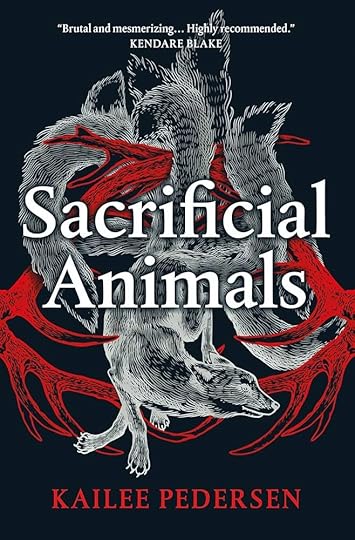 Nick’s Adolescent Memories
Nick’s Adolescent MemoriesNick’s adolescent memories are pivotal in understanding his character development. These memories, punctuated by moments of self-discovery and queer awakening, reveal the internal struggles he faces. Nick’s past becomes a lens through which readers view his present actions and motivations.
During his formative years, Nick experiences a series of events that shape his understanding of himself and his identity. These memories, often tinged with confusion and curiosity, provide insight into his character’s evolution.
Moments of realization occur against the backdrop of the farm, intertwining personal growth with the physical setting.Encounters with others during his youth highlight societal attitudes and personal conflicts related to his identity.Reflective passages in the novel allow readers to engage with Nick’s internal journey, fostering empathy and connection.The Collapse of Family BondsThe collapse of family bonds is a central theme, demonstrating how secrets and trauma can erode relationships. In “Sacrificial Animals,” these bonds are tested, leading to moments of confrontation and revelation. The Morrow family’s breakdown is both gradual and inevitable, reflecting larger themes of disintegration and renewal.
As the story unfolds, the family’s fragile connections begin to unravel, revealing long-buried secrets. The novel uses this collapse to explore how misunderstandings and hidden truths can fester over time.
Tensions rise as characters confront their past and present, leading to pivotal moments of truth.Family dynamics shift as new alliances form and old ones dissolve, altering the familial landscape.Resolution and reconciliation become uncertain goals, prompting readers to ponder the possibility of healing and forgiveness.The novel’s exploration of these themes invites readers to reflect on their own familial relationships and the impact of history on the present.
June 30, 2025
Tales from the Archive: Classic Horror: Call of Cthulhu
As you are already aware, I’m a huge Lovecraft fan. So once again I use the word review in the title of this blog lightly, as what is far more accurate a descriptor for this blog is an over-enthusiastic gush.
Today I am going to talk about The Call of Cthulhu.
The Call of Cthulhu was written by H.P Lovecraft in 1926 and was published in the pulp magazine Weird Tales in February 1928. This is a marvellous story for a number of reasons, the foremost being that despite it being a ‘monster’ story it has it’s own unique take on the kind of fear that such a creature should inspire.
SummaryThe story is told by Francis Thurston, it begins with the discovery of some notes & items let to him by his grand-uncle. In amongst these items is a small statue, Francis describes the depicted creature as an amalgamation of a human, dragon, and octopus. He is so moved by the statue that he goes to talk to its maker, an art student who has been suffering from the strangest dreams of a city.
Reviewing the notes there are frequent mentions of Cthulhu and R’lyeh (the city), and mass hysteria that seems to only affect certain kinds of people. There is also further discussion regarding another statue, this one made from black/green stone and resembling the statue Francis has. The notes go one to talk about an all-male cult, that was using women and children for …something. The cult worships the Great Old Ones and is awaiting the rise of Cthulhu.
Francis, now totally gipped by his investigation, discovers the story of the Alert, an Australian ship. It was found derelict with only one survivor, Gustaf Johansson. Johansson tells an interesting story of how his original ship was attacked and destroyed by the Alert but his crew killed the attackers and took the Alert as their own. They found an island where somehow everyone except Johansson and another chap dies. Francis decides to go and speak with Johansson, sadly Johansson dies before Francis can reach him. Fortunately, his widow can continue the story by handing over her late husband’s diary of events. This goes into a lot more detail than the aforementioned information, we find out the island held the city of R’lyeh, which had some super weird architecture and made everyone uncomfortable and considerably freaked out. The group accidentally released Cthulhu (as you do) and they all died save from Johansson and his buddy who tried to smash Cthulhu by ramming him with their ship. This did not work (really are you surprised?) but Johansson’s buddy lost his mind because he looked at Cthulhu.
The story ends with Francis realising he is being followed by a Cthulhu cult.
My Thoughts Photo by Lisa on Pexels.com
Photo by Lisa on Pexels.comUnlike a lot of modern horrors, especially film horror, Call of Cthulhu works because it speaks to the fear inside nearly all of us that we cannot control the world around us. It highlights our own powerlessness in the world and the greater universe around us.
The narration brings us right in close to the horror, we experience it as Francis does, unravel the mystery as Francis does. From the moment he starts to suspect he is being followed right to the point where he realises the danger from his human foes. But the point that really sinks in with us is when he realises that there is absolutely nothing he can do, both regarding the cult following him but also Cthulhu. His moment of recognising his own powerlessness and the dread that comes along with it is profound and deeply effective.
The name Cthulhu is well known, even by those who don’t recognise the name, Lovecraft. He’s a ridiculously popular character in the horror genre, both as himself and as an inspiration for other creations and themes. For while Cthulhu is a creature (an elder god actually) what makes him work so well in the horror industry is that he’s more a state of mind, a feeling, a theme. He is synonymous with the feeling of hopelessness, existential dread and the realisation of our own impending smallness and insignificance. He gives form to the feeling that we just don’t matter, we aren’t important, everything we do is so minute that we don’t even register.
Despite being a terrifyingly huge, physical ‘monster’ the fear he inspires isn’t that we might get crushed under him but rather the deep-seated terror that we just don’t matter. Cthulhu is once of the few creatures to inspire an entirely non-physical fear and it is that uniqueness that has allowed him to stick so firmly in popular culture and the imaginations of millions.
But despite his ridiculous popularity, Cthulhu only physically appears in one story by his creator (though he is referenced in others such as Mountains of Madness).
Call of Cthulhu is a short story, I wish it was longer.
June 27, 2025
Specters of the Past: Exploring the Haunted History of the Princes in the Tower
In the shadowy hallways of English history, few tales stir the imagination quite like the Tower of London mystery surrounding the Princes in the Tower. These young heirs, Edward V and Richard of Shrewsbury, vanished amidst a fog of political intrigue and royal disappearance that has haunted history for centuries.
As we delve into the chilling theories of their fate, the eerie echoes of betrayal and ambition still linger, captivating historians and ghost hunters alike. Join me as we unravel the enigma that entwines England’s past with the supernatural, exploring how this haunting narrative continues to fuel curiosity and suspense.
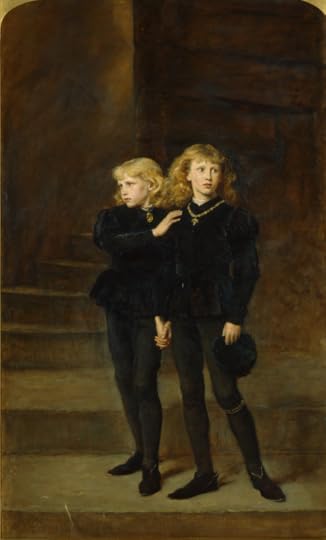 The Enigma of the Princes in the Tower
The Enigma of the Princes in the TowerThe Princes in the Tower—Edward V and Richard of Shrewsbury—disappeared in 1483. Their uncle, Richard III, declared them illegitimate to ascend the throne. This royal disappearance is shrouded in mystery, sparking debates among historians about their true fate.
Theories suggest they were murdered, yet evidence is scarce. Some speculate they escaped, living under assumed identities. The lack of concrete evidence, however, leaves room for speculation and intrigue.
In the 17th century, two skeletons were found beneath a staircase in the Tower. Many believe these are the remains of the princes, yet no conclusive identification has been made. The mystery persists, fueling the imaginations of ghost hunters and historians alike.
Shadows of Political Intrigue in EnglandThe disappearance of the princes is deeply entwined with the political intrigue that characterized England at the time. Richard III’s ascent to the throne was fraught with suspicions and allegations of betrayal.
Political maneuvering was rampant as Richard sought to consolidate power. The princes’ disappearance conveniently removed rivals, raising questions about the lengths he would go to secure his reign.
Historians argue over Richard’s culpability. Some view him as a villain, others a victim of circumstance. This debate highlights the complex nature of political dynamics in medieval England.
The political intrigue surrounding the princes’ disappearance reflects broader themes of ambition and power struggles within the English monarchy. This historical context continues to captivate those fascinated by the darker aspects of royal history.
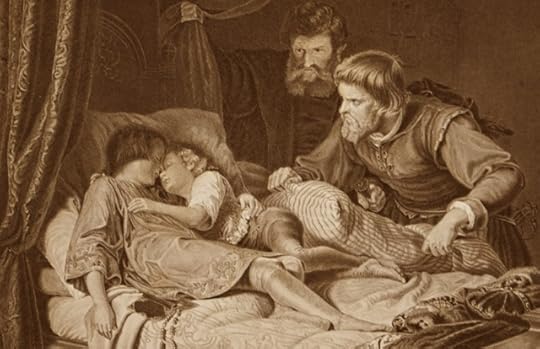 The Haunting Legacy of Royal Disappearance
The Haunting Legacy of Royal DisappearanceThe legacy of the princes’ disappearance has transcended history, becoming a haunting tale that continues to intrigue. This story has inspired numerous works of fiction and historical analyses.
The princes’ story is often retold in literature and media, offering various interpretations of their fate.Paranormal enthusiasts claim their spirits linger in the Tower, adding an element of haunted history to the narrative.The mystery endures as a symbol of innocence lost amidst the brutal reality of medieval politics.Historians and enthusiasts alike remain captivated by the tale, drawn to its blend of mystery and historical significance. The continued interest in this story is a testament to the enduring power of royal mysteries to fascinate and enthrall.
In conclusion, the mystery of the Princes in the Tower is more than a historical enigma; it’s a narrative that captures the imagination, intertwined with themes of power, betrayal, and the supernatural.
June 25, 2025
The Cultural Significance of Draug in Wendish Mythology: How Undead Spirits Shape Danish Narratives
In the shadowy corridors of Danish folklore, the Wendish Draug emerges as a compelling figure—a spectral entity that both haunts and fascinates (an archetypal reflection of humanity’s deepest fears and curiosities).
These undead spirits, imbued with the rich tapestry of Wendish mythology, offer not merely a chilling narrative but also a profound commentary on cultural and existential themes (see Smith, 2020).
As we delve into the origins and characteristics of these mythological creatures of Denmark, it becomes evident that their presence is not simply relegated to ancient tales but continues to reverberate through modern storytelling, challenging societal norms and inspiring discourse on the nature of life and death. Understanding the cultural significance of Draug in Danish narratives thus provides a unique lens through which we can explore the intersection of mythology, culture, and contemporary thought.
[image error]Pexels.com" data-medium-file="https://katiemariewriter.com/wp-conte..." data-large-file="https://katiemariewriter.com/wp-conte..." width="867" height="1300" src="https://katiemariewriter.com/wp-conte..." alt="" class="wp-image-12782" />Photo by Thirdman on Pexels.comTracing Ancient RootsThe Wendish Draug finds its origins in early Danish and Wendish cultures, which were deeply influenced by Norse mythology. These tales depicted Draug as malevolent spirits of the deceased, often those who had died under tragic or unjust circumstances. The belief in such spirits was common among seafaring communities, where the fear of the unknown depths of the ocean and the dangers it harbored were ever-present.
The Draug was often portrayed as a revenant—someone who had returned from the grave to haunt the living. This concept was not only a reflection of the community’s collective fears but also an expression of unresolved guilt and justice.
These tales served to reinforce social norms, warning against behaviors that could lead to such an unfortunate fate. The stories were a cautionary reminder of the consequences of one’s actions in life, suggesting that unresolved issues could transcend death.
Legends Passed Through GenerationsLegends of the Wendish Draug have been passed down through oral traditions and later documented in various forms of literature. These stories evolved over time, adapting to the cultural and societal changes that occurred in Denmark.
Early storytellers conveyed these tales through vivid descriptions and moral lessons, which ensured they captured the imagination of their audience. The continuity of these legends highlights the enduring nature of cultural narratives.
The stories would often be shared during gatherings, where elders would recount the eerie tales to younger generations.Over time, these oral traditions were recorded in manuscripts and eventually found their way into popular literature.The adaptation of these stories into various art forms has helped preserve the essence of the Draug mythos.As these legends traversed generations, they became an integral part of Danish cultural heritage, serving as a link between the past and the present.
[image error]Pexels.com" data-medium-file="https://katiemariewriter.com/wp-conte..." data-large-file="https://katiemariewriter.com/wp-conte..." width="867" height="1300" src="https://katiemariewriter.com/wp-conte..." alt="" class="wp-image-12784" />Photo by Lord Ander Fotografia on Pexels.comHaunting Traits and BehaviorsThe haunting traits of the Wendish Draug include its ghastly appearance and terrifying demeanor. Often depicted as decaying corpses, these spirits were said to have a foul stench and the ability to transform into smoke or mist, allowing them to traverse the land undetected.
Physical Appearance: Draugs are often described as having a grotesque appearance, with decaying flesh and hollow eyes.Abilities: They possess supernatural powers, such as immense strength and the ability to control the weather, particularly storms at sea.Behavior: Draugs are known for their malevolent behavior, seeking revenge on those who have wronged them or disturbing the peace of the living.These traits contribute to the fearsome reputation of the Draug, reinforcing its role as a cautionary figure in folklore.
Symbolic Meanings in FolkloreThe symbolic meanings of the Draug in folklore are multifaceted, serving as metaphors for various societal concerns and existential themes. The Draug embodies the fear of death and the unknown, as well as the concept of justice beyond the grave.
The Draug’s presence in stories often symbolizes the consequences of unethical behavior and the importance of resolving conflicts in life.
Justice and Retribution: Draugs are often depicted as seeking vengeance for wrongs done to them, representing the idea that justice will eventually prevail.Existential Themes: Stories of the Draug explore themes of mortality and the afterlife, prompting reflections on the nature of the human soul.Cultural Reflections: The Draug serves as a reflection of societal values and fears, illustrating the complexities of life and death.These symbolic meanings have ensured the Draug’s continued relevance in cultural narratives.
Influence on Danish FolkloreThe influence of the Draug on Danish folklore is evident in the numerous tales and legends that feature these undead spirits. The Draug has become a staple figure in Danish mythology, embodying the fears and anxieties of the people.
Folkloric Impact: The Draug has shaped the narrative structure of many Danish tales, providing a rich backdrop for exploring complex themes.Cultural Identity: The stories of the Draug contribute to the cultural identity of Denmark, serving as a reminder of the nation’s mythological heritage.Continuity of Tradition: The continued presence of Draug in folklore highlights the enduring nature of these narratives, ensuring their preservation for future generations.By influencing Danish folklore, the Draug has become an integral part of the country’s cultural tapestry.
Reflections in Modern StorytellingIn modern storytelling, the Draug continues to captivate audiences with its chilling presence and symbolic depth. These undead spirits have found their place in contemporary literature, film, and other media, reflecting current societal themes and concerns.
Literary Adaptations: Modern authors have reimagined the Draug in various ways, incorporating them into novels and short stories that explore new dimensions of the myth.Cinematic Interpretations: The Draug has appeared in films and television series, captivating audiences with its eerie presence and supernatural abilities.Cultural Commentary: These modern interpretations often use the Draug as a vehicle for exploring themes such as morality, justice, and the human condition.The Draug’s enduring appeal in modern storytelling underscores its cultural significance and ability to adapt to changing societal contexts.



